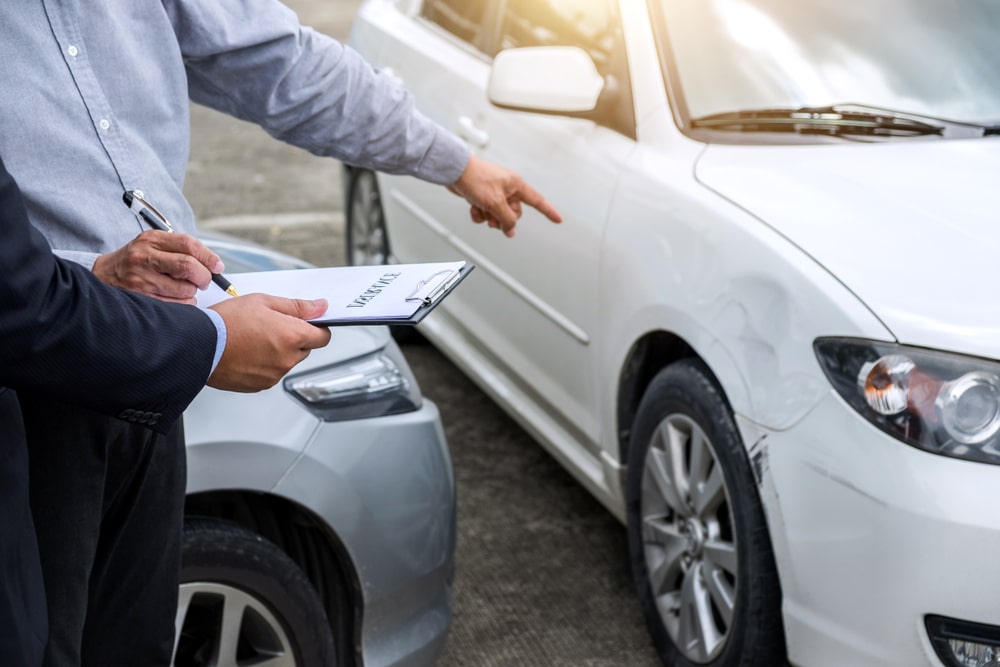 Who Pays For Car Damage In A No Fault State
Who Pays For Car Damage In A No Fault State The confusion around who pays for car damage in a no fault state
Whenever disaster strikes while driving it can be difficult to know who is responsible for the repair or replacement of your car. In a no-fault state, the answer will depend on what state you’re located in and what type of accident resolved.
The No-Fault System
In a no fault system, each driver's insurance company pays to repair the damages to his or her own vehicle in an accident, regardless of who was at fault. The idea behind this system is to minimize litigation by paying claims quickly and prevent huge payouts for minor losses or disputes. These laws generally apply for property damage only; if any medical damages or personal injuries occurred, the responsibility of payment will be determined according to the fault party in the accident. As such, carrying personal injury protection (PIP) insurance is recommended in a no-fault state, as it covers yourself and your passengers in the event of a car crash.
What Types of Damages are Covered?
The types of damage covered by no-fault insurance when filing claims vary from state to state. Generally, personal property or possessions within the car (such as laptops, phones, etc.) are not covered, even if they are damaged in an accident. Some no-fault states may offer additional coverage for items inside the car, so it’s best to contact your local motor vehicle registry or department of motor vehicles to find out more about your state’s coverage. In most no-fault states, your car insurance company will cover damage to your car regardless of who’s at fault, with a few exceptions. If another driver is obviously at fault and injury or serious damage to your car occurs, you may be able to file a fault claim in order to cover medical costs or receive compensation for the other driver’s negligence. Additionally, some states may allow you to file an at-fault claim if the policy limits of your no-fault plan are surpassed.
Liability Coverage for A No-Fault State
Because the no-fault system prevents the filing of fault claims, it is standard to carry additional liability insurance in a no-fault state. This coverage kicks in when the damage caused by an accident is much greater than the coverage in your no-fault plan. This additional coverage will insure your car in the event that another driver is at fault in an accident, as well as for any non-vehicular damage such as the property of others. It is important to be familiar with your state’s no-fault regulations, as some states may require additional coverage. In some cases, drivers may be required to carry liability insurance to be able to register their vehicle and maintain their license.
Determining Fault and Filing A Claim
When filing a property damage claim in a no-fault state, be sure to document the accident and always exchange information with the other motorist, as the other party’s no-fault insurance will be covering the damage regardless of fault. Additionally, in the event of a fault claim, you will need to use the other party’s insurance while filing the claim. The majority of the time, determining who should be at fault for a car accident is a matter of the insurance companies. If a fault claim is disputed, the insurance companies will work together to investigate the details of the accident, including statements from both drivers, the police report, and any witness information. It’s incredibly important to understand the laws in your state and determine what type of coverage you need in order to be adequately covered for all kinds of situations. The ability to remain legally and financially protected throughout your twelve month term of coverage could be the difference between feeling overwhelmed and having financial stability.
Conclusion
Understanding who pays for car damage in a no-fault state is an important piece of knowledge for any motorist. Every car accident is unique and can result in a variety of additional costs, depending on the severity of the crash. By understanding the laws of your no-fault state, you can ensure that you have the proper insurance coverage for any situation that may arise. Having a deep knowledge of auto insurance, will help make sure you're adequately prepared in the event of a car accident.
 Who Pays For Car Damage In A No Fault State
Who Pays For Car Damage In A No Fault State
Post a Comment for "Who Pays For Car Damage In A No Fault State?"